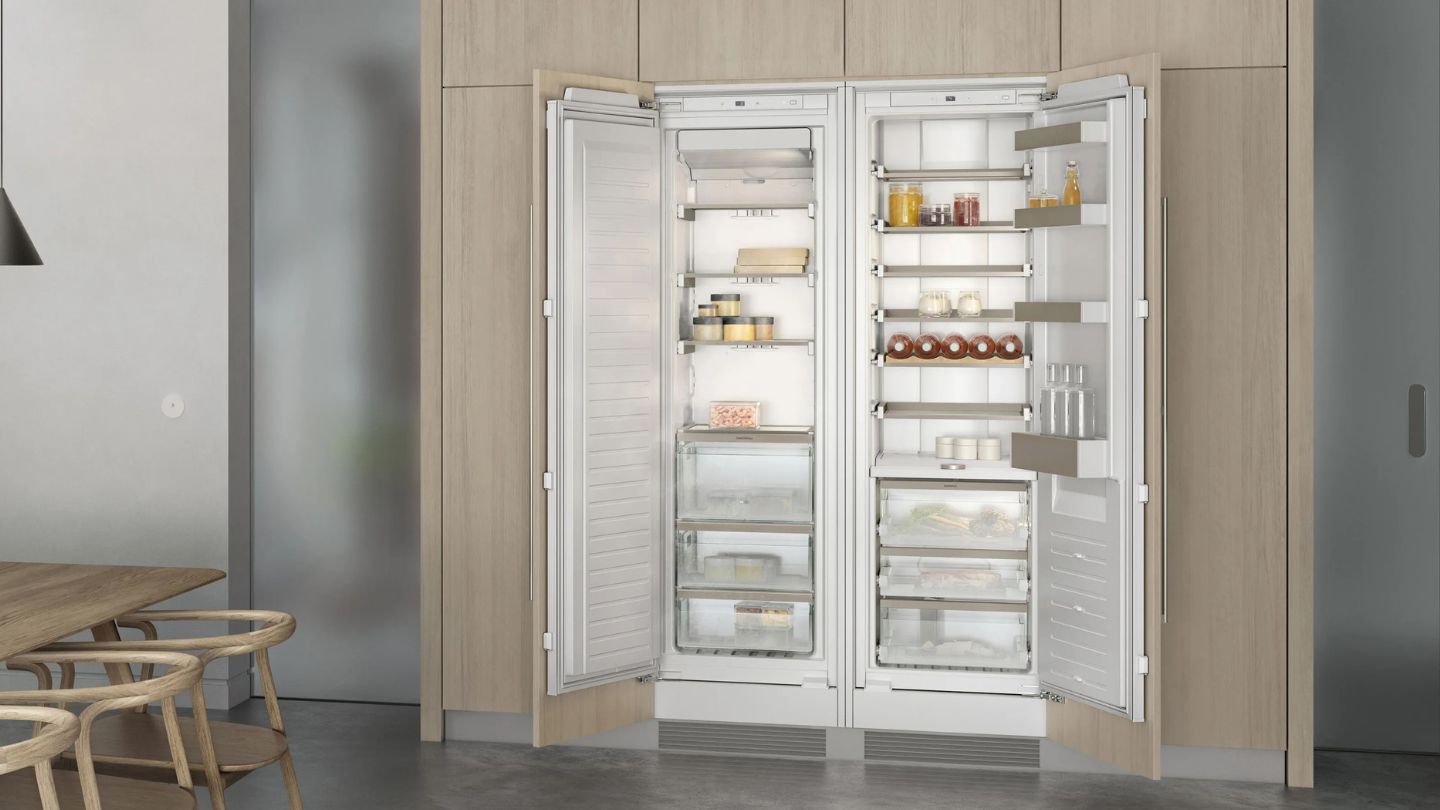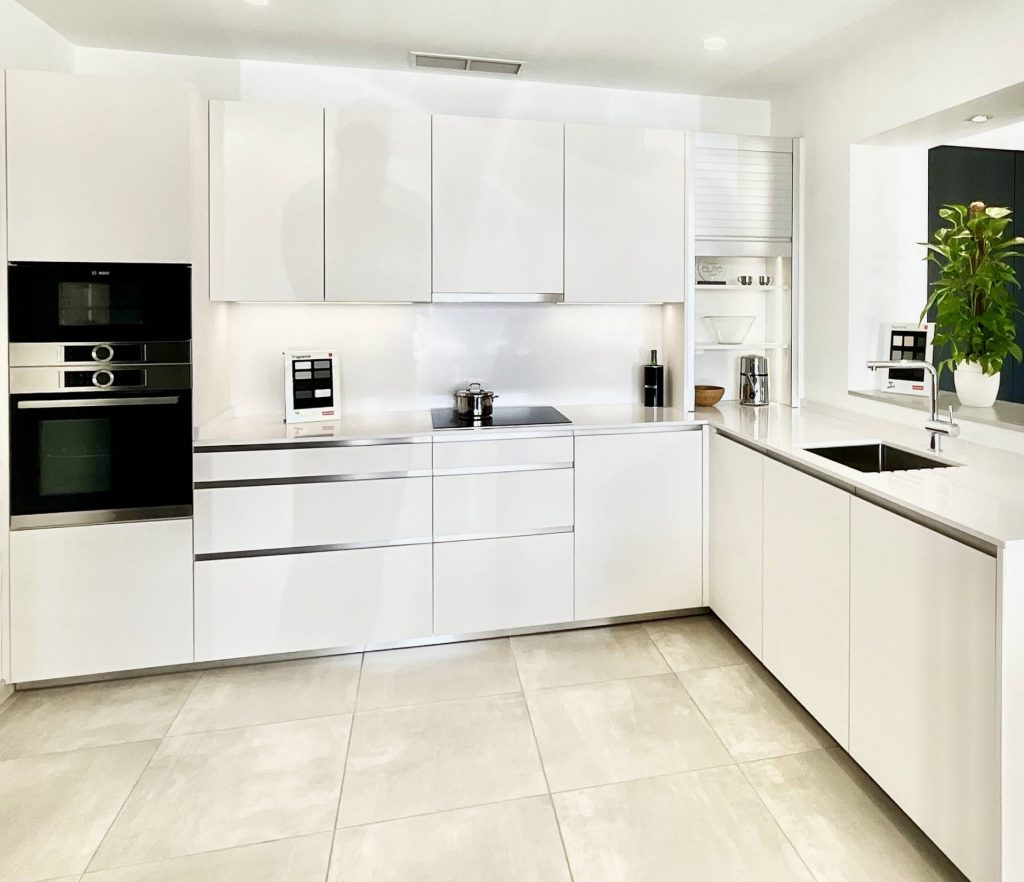
Integrated appliances in your kitchen
In the search for modern, functional and aesthetically harmonious kitchens, built-in appliances have become one of the best options available. This type of appliance allows you to make the most of the space, hiding them from view and maintaining a fluid and clean design.
At Design Kitchen, we work with the best brands, such as Gaggenau, Miele or Siemens to create kitchens that fuse functionality with design, and in this article we will show you everything you need to know about built-in appliances.
What are built-in appliances?
Built-in appliances are those that are installed inside the kitchen furniture in such a way that they are completely hidden or camouflaged with the rest of the design. This is achieved by adding a panel or door of the same material as the kitchen furniture, which helps these appliances to blend in perfectly with their surroundings.
The main idea behind built-in appliances is to achieve a more aesthetically minimalist kitchen, where appliances do not break the visual harmony of the space.
Some of the most common appliances that are often integrated are:
- Refrigerators: Built-in refrigerators are hidden behind a door that can be opened together with the appliance. Nowadays, there are built-in refrigerators that do not sacrifice space, offering a larger capacity than traditional models.
- Dishwashers: These appliances are key in many kitchens and, being built-in, they are positioned so that they are concealed until they need to be used. They can be installed with a sliding or fixed door, depending on the layout of the kitchen.
- Washing machines: Although it is more common to find washing machines in separate laundry areas, in many homes they are integrated into the kitchen. Built-in washing machines allow them to be hidden from view from the outside, while maintaining a coherent design.
- Ovens and microwaves: While ovens and microwaves are not usually covered by a door, they are integrated into the furniture design and are installed in columns to maintain the overall aesthetics. These appliances are designed to look like an extension of the furniture.
- Extractor hoods: Although extractor hoods are usually visible in many kitchens, built-in extractor hoods can be concealed in the ceiling or in the worktop, providing a cleaner, more minimalist design.
Built-in or panel-mounted appliances: What is the difference?
Although many people tend to confuse the terms integrable and panelable, there are clear differences between the two.
Built-in appliances are those that are completely hidden behind a panel made of the same materials as the kitchen units. This means that there is no visible indication that there is an appliance behind the panel. On the other hand, panel-mounted appliances have a part covered by a decorative panel, but leave the controls or the control panel visible.
- Built-in appliances: They are completely concealed, making them an ideal solution for kitchens that seek a minimalist and fluid design. Thanks to advances in appliance design, it is possible to hide even the knobs and controls, allowing the whole kitchen to have a homogeneous appearance.
- Panel appliances: This type of appliance was widely used in the 1990s, but has fallen into disuse. Although part of the appliance is covered, the buttons and controls remain visible, which breaks with the visual continuity.
In terms of aesthetics, built-in appliances offer greater uniformity and allow kitchens to remain visually clean. This is especially important in open-plan kitchens or those that seek to maximise the feeling of spaciousness.
Advantages of built-in appliances
- Homogeneous design: By being integrated into the furniture, the appliances go unnoticed, allowing the kitchen to have a more harmonious and minimalist design. The kitchen appears more organised and free of visual distractions.
- Space saving: Built-in appliances help to optimise space, which is especially useful in small kitchens or in homes where every available centimetre is to be maximised. Because they are hidden in the units, they do not interfere with the natural flow of the kitchen.
- Easier cleaning: Built-in appliances, being concealed, reduce the accumulation of dirt on edges or between cabinets, making daily cleaning easier.
- Ideal for open kitchens: In open concept spaces, built-in appliances allow the kitchen to blend seamlessly with the rest of the space, without interrupting the aesthetics of the living or dining room.
Which appliances can be integrated?
More and more electrical appliances can be integrated into the kitchen design. Here we show you some of the most common ones:
- Refrigerators and freezers: These appliances can be hidden behind furniture doors, achieving a clean effect without visual interruptions.
- Dishwashers: Available in various sizes, built-in dishwashers blend in with the design of the rest of the kitchen, making the space look uniform and organised.
- Extractor hoods: Although decorative hoods remain popular, built-in or telescopic hoods are gaining ground because of their ability to be concealed in the worktop or ceiling when not in use.
- Wine cellars: These small wine cellars can be integrated under the worktop, keeping the wine at the ideal temperature without sacrificing the kitchen design.
Renovate your kitchen in Estepona with Design Kitchen
At Design Kitchen, we specialise in designing kitchens that are not only functional, but also aesthetically appealing. We work with the best brands of built-in appliances (Siemens, Bosch, Balay or Smeg are currently the most sought after) to ensure that each kitchen is unique, modern and perfectly adapted to the needs of our customers.
Whether you’re looking for a minimalist kitchen, an open plan kitchen or a classic style kitchen, we can help you select the ideal appliances that will blend seamlessly into your space. Opting for appliances that can be integrated into your kitchen will not only allow you to enjoy a cleaner, more minimalist aesthetic, but will also help you maximise the space available.
